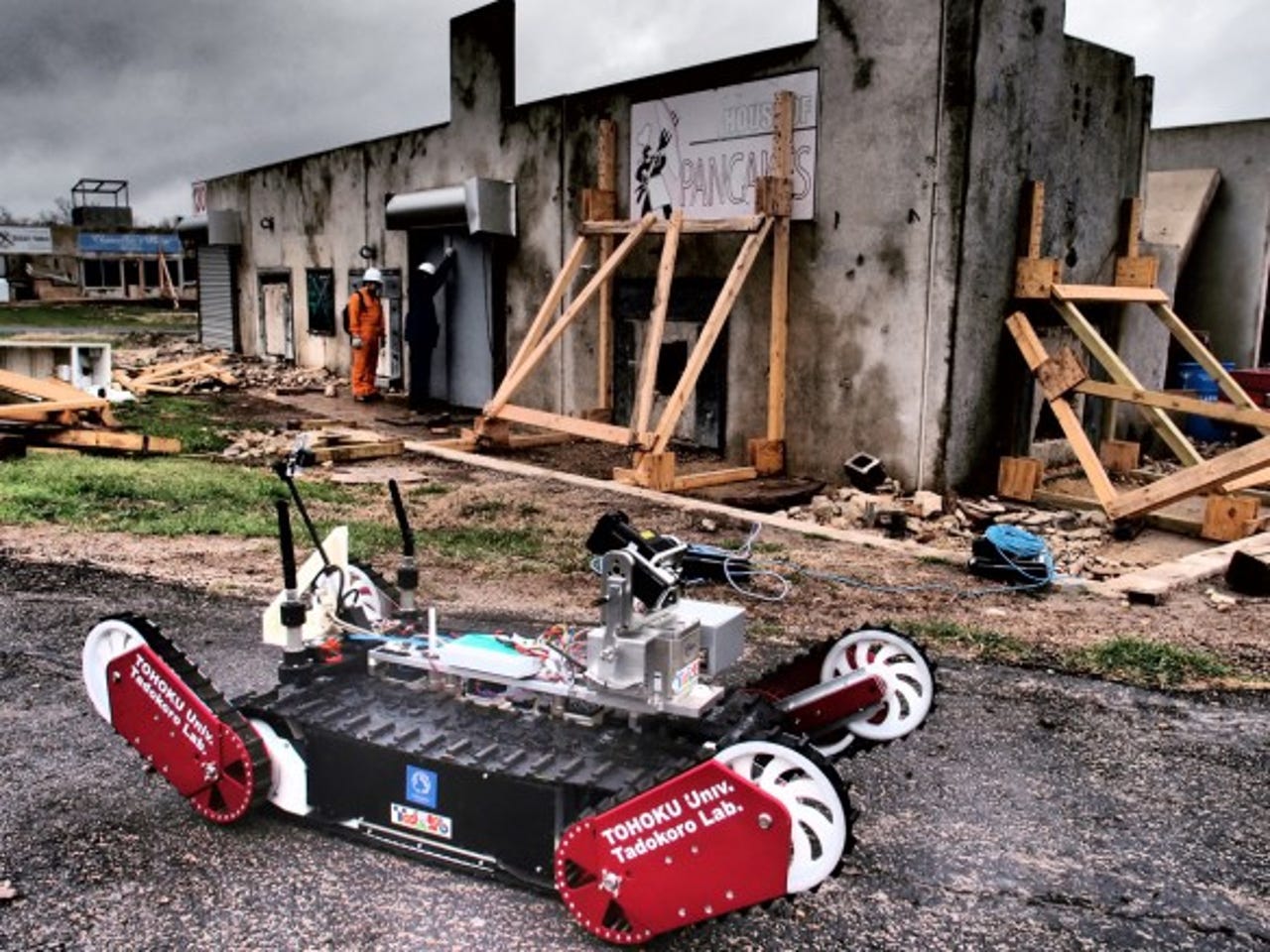Disaster robots slow to gain acceptance from responders

To date, robots have been used in 43 disasters worldwide, according to data provided by the Center for Robot-Assisted Search and Rescue (CRASAR). It seems like a no-brainer. Robots can act as valuable tools during disasters, sifting rubble or delivering life-saving supplies to trapped victims after an earthquake. Unmanned systems can provide valuable reconnaissance and infiltrate dangerous or unfamiliar environments to speed up response times during floods or fires, scenarios where each passing minute has consequences for survivability. The technology already exists, and much of it is available off-the-shelf.
But adoption of robots to aid in disaster response and recovery has been painfully slow. "There's no mechanism to buy them, no mechanism to train, no manpower," says Dr. Robin Murphy, who heads CRASAR, which is housed in Texas A&M. "Most use of robots during incidents is ad hoc."
Last week, Murphy, who wrote the book Disaster Robotics, a seminal text in the field, won the Lawler Award from the Association for Computing Machinery for her humanitarian contributions within computer science and informatics. Seems like a good time to take a bow, right? But Murphy injected a dour note early in our conversation. "I feel like I've failed in our education campaigns."
Where are Robots Most Useful In Disaster Recovery?
Just last month, researchers in Japan unveiled an octopus robot designed to clear rubble leftover from the 2011 tsunami. Robots can play a big role when hazardous materials create dangerous situations for rescue personnel, as is the case in the Fukushima plant. But the greater value is the data robots can provide. The Tokyo Electric Power Company has deployed robotic probes to measure radioactivity in the Fukushima plant. Incident commanders will use the vital information to plan cleanup and containment strategies.
"You can't replace humans in something as sophisticated as emergency response," says Murphy. "You need an expert figuring out what's different about this emergency." But you can replace that person's binoculars, and that's the promise of UAVs, UGVs, and aquatic vehicles, which can provide vital images and readings to aid incident commanders.As an example, Murphy points to the 2007 collapse of a portion of a condo building in Jacksonville, Florida, which left one dead and several others injured. One difficulty of attempting a recovery after a collapse is that unstable rubble may shift and topple onto rescuers. Manned helicopters have been used to attain information about the structural integrity of a rubble pile, but large rotary vehicles also kick up dust, obscuring the field of view.
Part of CRASAR's mission is to put useful robots in the hands of incident commanders in the field. Through the Roboticists Without Borders program, Dr. Murphy and her team have sent bots to assist in 18 incidents since 2001, including the Jacksonville collapse. In each case the robots have demonstrated their utility. "Everyone sees the value in using robots in these situations, but there's a difference in seeing the value in something and actively going for it."
What's the problem?
Part of the issue with widespread deployment of robots is that small durable devices -- typically those designed for security and military applications -- are expensive. "Most acquisition agencies think of robots like cars." The problem is that robotics technology advances quickly, and few agencies are willing to pay tens of thousands of dollars for a piece of hardware that may be outdated in a few years.
CRASAR provides a stopgap. With grants and donations from technology partners, it owns and maintains several state-of-the-art UAVs, UGVs, and aquatic bots that are available during disasters free of charge. "I have a lab full of black cases," Murphy says. "We concentrate on man-packable robots, which fit in one or two backpacks."
Robotics
But even with robots at the ready, the complexities of the national response framework make it difficult to get word to the right sources that robots are available and ready to deploy. Agencies must be willing to invest in training for their personnel, and that line item hasn't found its way into into tight agency budgets. CRASAR makes every attempt to educate agencies involved in relief and recovery, but when disaster does strike it must take a reactive role, waiting for incident commanders in the field to reach out. So far, they've been slow to do so.
That's been frustrating for Dr. Murphy. But the other part of CRASAR's mission is technology evaluation, and that's led to a better understanding of how robots function in extreme situations and where they might provide the most benefit to responders. This summer, Murphy and her team will test several robots in a flooding scenario in Texas. If today's emergency response workers aren't quite ready for robots, it's a safe bet that the work she's doing is laying the groundwork for the next generation of emergency workers. And when the flood waters rise again, I, for one, hope they call in the robots.